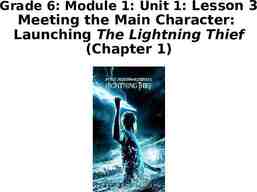Relating Scale Drawings to Ratios and Rates
22 Slides596.30 KB

Relating Scale Drawings to Ratios and Rates

Types of Scale Drawings A scale drawing can be one of two things: – Reduction: the drawing is smaller than the actual object – Enlargement: The drawing is larger than the actual object. Can you think of an example where each would be used?

Discussion What are possible uses for enlarged drawings/pictures? What are the possible purposes of reduced drawings/pictures?

Vocabulary Scale Drawing: A drawing in which all lengths between points or figures in the drawing are reduced or enlarged proportional to the lengths in the actual picture. A constant of proportionality exists between corresponding lengths of the two images. Reduction: The lengths in the scale drawing are smaller than those in the actual object or picture. Enlargement/Magnification: The lengths in the scale drawing are larger than those in the actual object or picture. One-to-one Correspondence: Each point in one figure corresponds to one and only one point in the second figure

a. If the original lengths are multiplied by 2, what are the new coordinates? c. Is the new picture a reduction or an enlargement? d. What is the constant of proportionality? e. If the original lengths are multiplied by 1/3 what are the new coordinates? f. g. Is the new picture a reduction or an enlargement? h. What is the constant of proportionality?

What is a scale drawing? What is an enlargement? A reduction? What’s the importance of matching points and figures from one picture/drawing to the next? How do scale drawings related to rates and ratios?

The Unit Rate as the Scale Factor

Finding the Scale Factor

original sticker What type of scale drawing is the sticker? What is the importance of proportionality for Rubin? How could we go about checking for proportionality of these two images?

Steps to check for proportionality for scale drawing and original object/picture: 1. Measure lengths of scale drawing. Record on table. 2. Measure corresponding lengths on actual picture/drawing. Record on table. 3. Check for constant of proportionality.

Key Idea: The scale factor can be calculated from the ratio of any length in the scale drawing to its corresponding length in the actual picture. The scale factor corresponds to the unit rate and the constant of proportionality. Scaling by factors greater than 1 enlarge the segment and scaling by factors less than 1 reduce the segment

What relationship do you see between the measurements? Is the sticker proportional to the original sketch? How do you know? What is this called? What is the scale factor for the sticker as compared to the original sketch? How do you know? Each of the corresponding lengths are how many times larger? What can you predict about an image that has a scale factor of 3?

Use a scale factor of 3 to determine the lengths on the new image 1 1/2 1 1/2 1/4

Is this a reduction or an enlargement? How could you determine even before the drawing? Can you predict what the scale lengths of the scale drawing will be? What steps were used to create this scale drawing?

Create the drawing with a scale of 1/2 What steps were used to create this scale drawing?

3ft 3ft What is the shape of the portrait? Will the resulting picture be a reduction or a magnification? What needs to be done before multiplying the scale lengths by the scale factor? What will the scale drawing look like? Scale Factor 1/18

5 ft Find the new diameter in inches Scale factor 1/30

Where is the constant of proportionality represented in scale drawings? What step(s) are used to calculate scale factors? What operation(s) is (are) used to create scale drawings?

Exit Ticket A rectangular pool in your friend’s yard is 150 ft. x 400 ft. Create a scale drawing with a scale factor of 1/600 Use a table or equation to show how you computed your scale drawing lengths.









